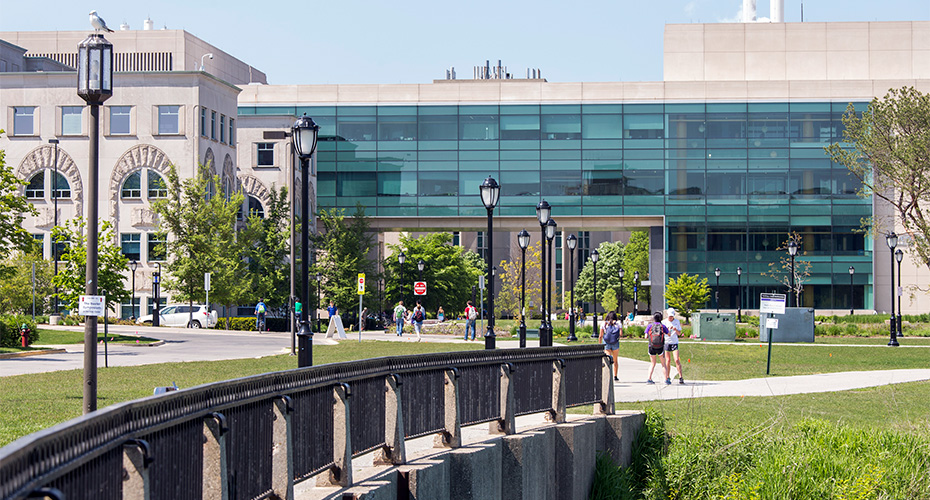Sparking Transdisciplinary Connections
Discoveries arise from the collaborative ecosystem at Chemistry of Life Processes Institute

If it weren’t for the transdisciplinary connections created by the Chemistry of Life Processes Institute (CLP), chemist Tom O’Halloran and biomedical engineer Vadim Backman might not have started a casual conversation about their work. And without that conversation, they might never have identified existing, FDA-approved drugs that can dramatically improve the effectiveness of cancer treatment.
O’Halloran, founding director of CLP and a world-renowned expert in inorganic chemistry, had previously determined that cancer cells often have a disproportionate balance of sodium and potassium, compared with healthy cells. CLP member Backman, whose imaging technology allows an unprecedented look inside cancer cells, was searching for a drug to alter cancer’s nuclear structure. O’Halloran and Backman discovered that drugs that are often used to manipulate sodium and potassium levels in cancer could also be used to change the nuclear structure of cancer cells. Using those drugs alongside conventional chemotherapy significantly improved chemotherapy effectiveness and rendered cancer cells unable to resist treatment.
Located on Northwestern’s Evanston campus, CLP fosters collaborative and transdisciplinary research spanning life science, chemistry, physics, medicine and engineering. Faculty and students involved in CLP bring together their unique knowledge and skills to transform the diagnosis and treatment of cancer, cardiovascular and kidney disease, infectious diseases, neurodegenerative diseases, and trauma. This convergence of expertise is revealing new research questions and opening new areas of inquiry that will have a long-lasting impact on human health.
We all have our own major research questions, but as soon as we start interacting, we find whole new fields of knowledge that can be uncovered.”
Director of Chemistry of Life Processes Institute
CLP is housed in the Richard and Barbara Silverman Hall for Molecular Therapeutics and Diagnostics, which is designed to increase the physical proximity of these biologists, chemists and engineers to facilitate even greater collaboration. Silverman’s distinctive U-shape, floor-to-ceiling glass windows and open courtyard allow CLP members to connect and collaborate more easily.
Collaboration at CLP led to the creation of the Chicago Region Physical Sciences-Oncology Center (CR-PSOC), a National Cancer Institute-funded coalition of engineers, life scientists and physicists joining forces to better understand cancer and more effectively defeat it. “We’re taking blue-sky approaches to bring new insights into cancer and translate those into solutions for patients,” says O’Halloran, the contact principal investigator at CR-PSOC.
“This is the beauty of CLP,” O’Halloran says. “We all have our own major research questions, but as soon as we start interacting, we find whole new fields of knowledge that can be uncovered, and that can pretty quickly have a major impact on how we think about health and disease.”